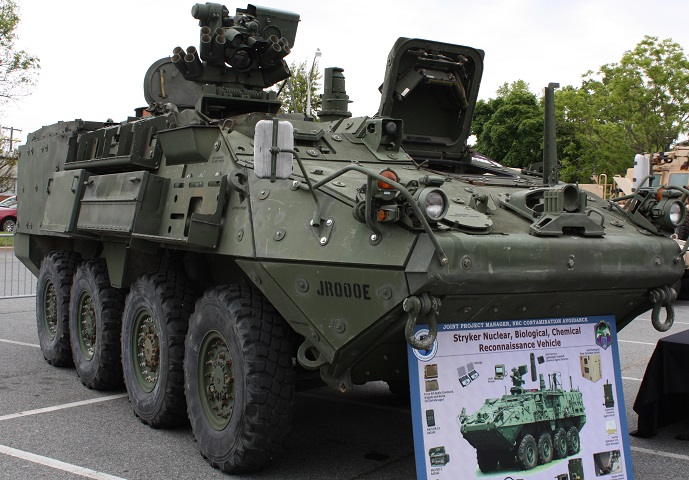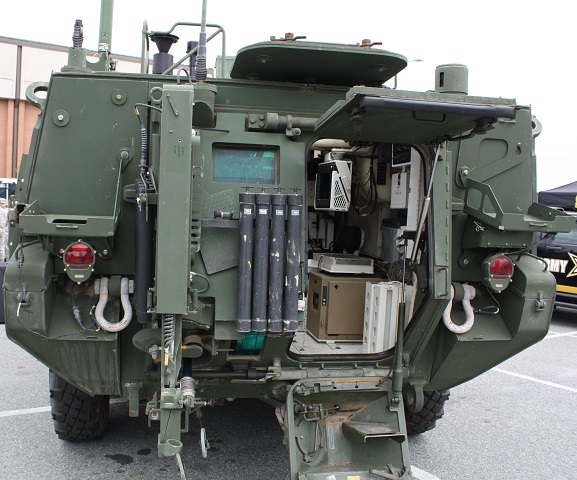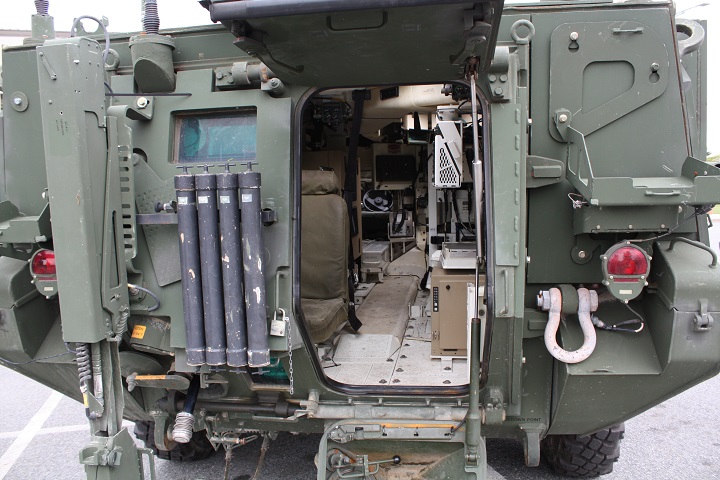
NBC Reconnaissance Vehicle M1135 Stryker.

The front of the Stryker NBCRV differs little from its base of the Stryker ICV. Visible in this view between the remote weapon system and the open driver's hatch is the joint service light-weight stand-off chemical agent detector scanner module. This system uses passive infrared to detect chemical vapor clouds, and it can classify and identify chemical agents. Detection can occur up to 2km (1.2mi) away from the contaminated area. The vehicle commander's hatch is open behind the remote weapon system, but the Stryker NBCRV does not have a squad leader's roof hatch. (Photo by Richard S. Eshleman.)

The joint service light-weight stand-off chemical agent detector is on the left hull roof directly behind the remote weapon system. Further to the rear, under the brush guard, can be seen the biological agent warning system intake and the wider joint biological point detection system collector intake. Near the rear of the roof, somewhat obscured by the tree in the background, is the METSMAN sensor mast. The two small wheels of the double wheel sampling system are visible behind the vehicle's rear wheel. This automated system can lower one wheel to the ground to collect samples while the other is raised and pressed against a heated probe membrane for analysis by the Chemical Biological Mass Spectrometer Block II. The wheels and probe membranes can be replaced without compromising the interior of the vehicle. (Photo by Richard S. Eshleman.)

Stowage boxes and racks line the right side of the vehicle since much of the already-cramped interior has been taken up by instruments. The climate control and overpressure system is installed along the right rear of the vehicle. (Photo by Richard S. Eshleman.)

The rear ramp found on most Strykers has been replaced on the NBCRV by a rear door offset to the vehicle's right. The four black tubes are vial stowage containers, and to the left of these is a sampling system that can be used in conjunction with a rubber glove mounted in the lower half of the rear door. The surveyor's position can be identified by the location of a vision block in the rear hull next to the door, and also by one facing downward directly under the vial stowage containers. The seatback for the assistant surveyor is just visible, and the surveyor is provided with a video display terminal hanging from the vehicle's roof in a white rack. (Photo by Richard S. Eshleman.)

The surveyor's seat is visible here, and the open interior allows us to see all the way to the driver's position. The downward-facing chemical probe for the double-wheel sampling system can be seen with its white sensor head and black extension. (Photo by Richard S. Eshleman.)